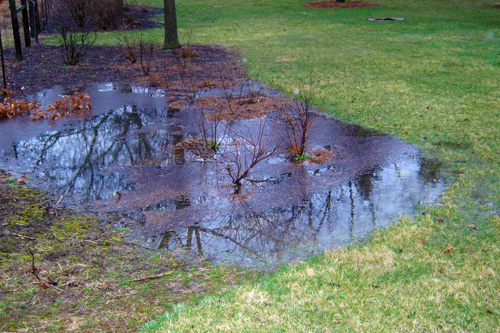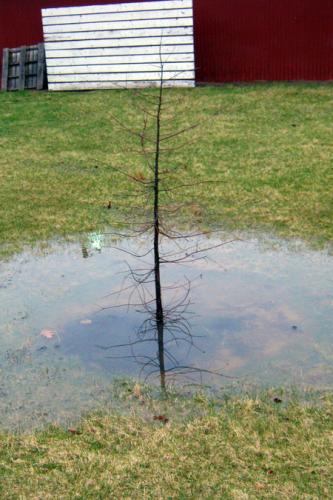It’s raining, it’s pouring, and it’s a good time for a landscape site assessment
Look on the bright side, recent soggy conditions provide a good opportunity to identify potential problem spots in your landscape.
April is turning out to be a soggy month for most of Michigan. While most homeowners are inclined to hunker down indoors and keep an eye on their sump pumps on these dark, dreary days, our current run of wet weather is a good opportunity to take a stroll around your property and make some notes. In particular, note any areas where water is accumulating.

After identifying wet zones, consider plants that tolerate periodic flooding such as Michigan holly (Ilex verticulata). Photo credit: Bert Cregg, MSU
According to Michigan State University Extension, poor drainage is one of the most common site factors that limit landscape tree and shrub survival and growth in Michigan. Sites that retain water for more than a day or two after the rain stops are especially problematic. The challenge with wet areas is we usually wait to plant trees and shrubs until things are high and dry and it’s easy to forget where the wet spots are.
There are two primary strategies for establishing healthy trees and shrubs in flood-prone spots. First, determine if the problem can be corrected. In some cases, homeowners may be able to re-direct water flow from downspouts or other sources to keep water from accumulating in one spot. Again, these kinds of problems are easiest to spot if you go out when it’s raining. Re-grading the area or installing drain tiles are other options, but these usually require skills and equipment beyond the average do-it-yourselfer.
If correcting the drainage issue is not an option, the second strategy is to plant trees or shrubs that are tolerant of flooding. Plants vary widely in their tolerance of soil flooding and, not surprisingly, trees and shrubs that grow naturally along riverbanks and other low areas are usually the most tolerant.

Baldcypress (Taxodium distichum) is a flood-tolerant deciduous conifer that grows well in lower Michigan. Photo credit: Bert Cregg, MSU
There are numerous resources on flood tolerant trees and shrubs on the web. Two of the better resources are from the Morton Arboretum and from Cornell University. Please note the Cornell guide is a large (over 6 MB) PDF file.
Wet areas on your property do not have to be a “dead zone,” but establishing trees and shrubs in low laying areas takes some planning. The first step in the process is assessing your site and identifying the problem areas. The best way to do this is to put on a raincoat and take a walk in the rain.
Dr. Cregg’s work is funded in part by MSU’s AgBioResearch.



 Print
Print Email
Email


